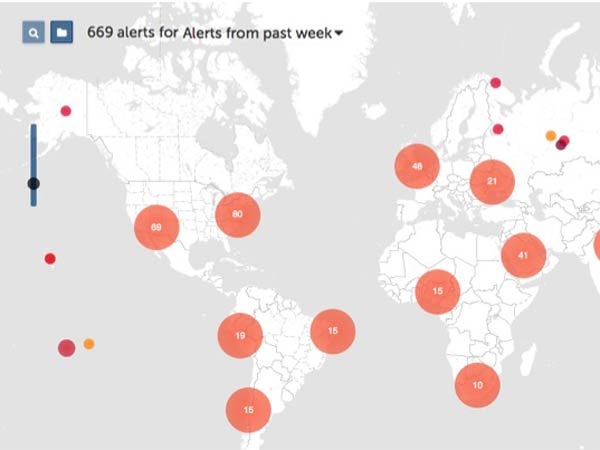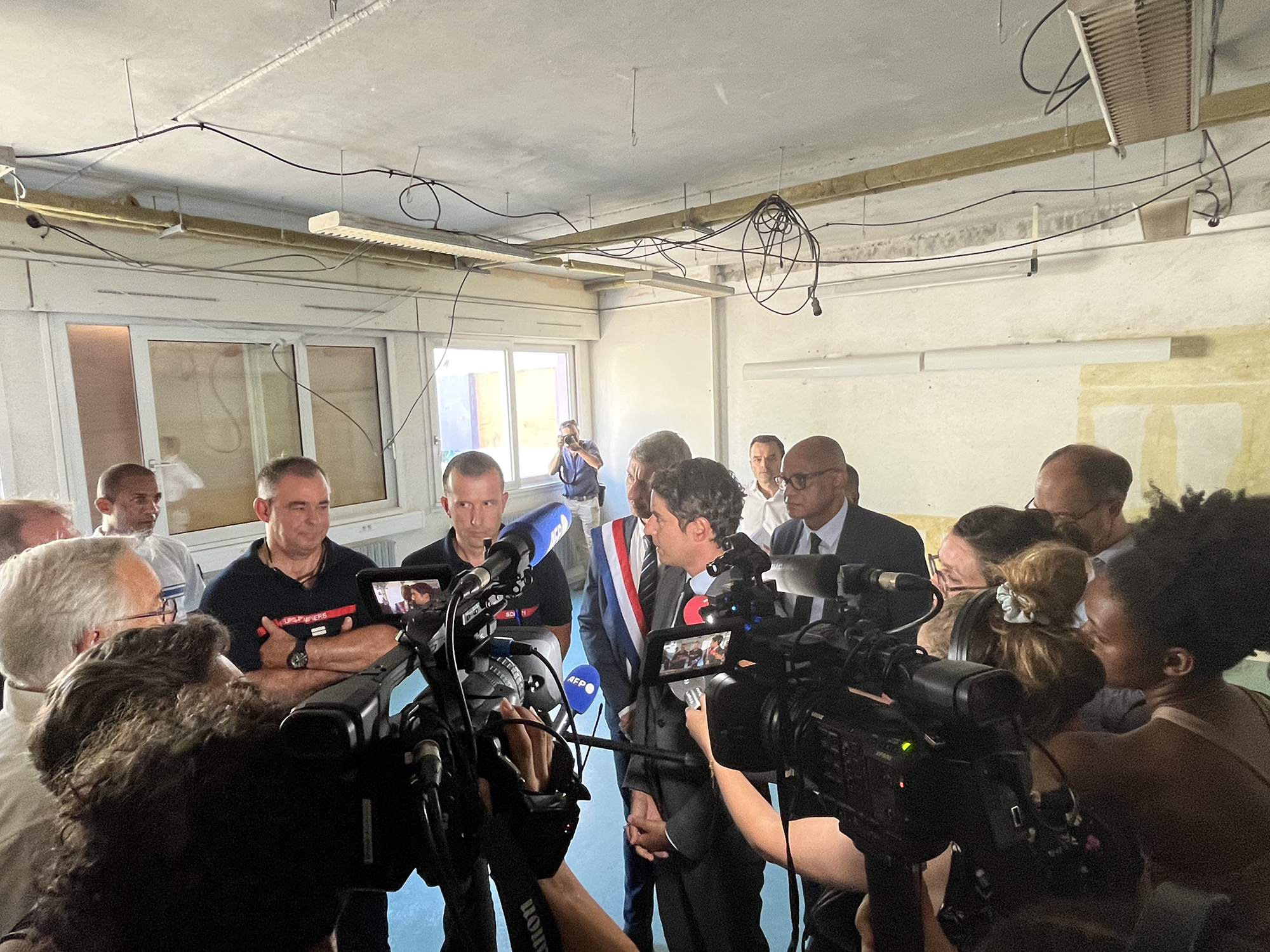Mapping The Nation's Newest Business Hotspots

Table of Contents
The Rise of Secondary Cities as Business Hotspots
The allure of major metropolitan areas like New York City, Los Angeles, and Chicago is undeniable, but increasingly, businesses are finding success and significant cost savings in secondary cities. This shift is fueled by two primary factors: lower costs and improved quality of life.
Lower Costs of Living and Doing Business
One of the most significant advantages of secondary cities is the considerably lower cost of living and doing business. This translates to reduced overhead costs across the board.
- Reduced overhead costs: Rent for office space, utilities, and even employee salaries are often significantly lower in secondary cities compared to major metropolitan areas. This allows businesses to allocate more resources towards growth and innovation.
- Access to a skilled workforce at competitive salaries: While salaries may be lower than in major tech hubs, they often still attract skilled professionals seeking a better work-life balance and a lower cost of living. This allows businesses to build strong teams without breaking the bank.
- Stronger community support for businesses: Many secondary cities actively court new businesses, offering incentives and fostering a collaborative environment. This supportive ecosystem can be invaluable for startups and expanding companies.
Examples of secondary cities experiencing remarkable business growth include Boise, Idaho; Raleigh, North Carolina; and Nashville, Tennessee. These cities offer a compelling blend of affordability, talent, and a welcoming business climate.
Improved Infrastructure and Amenities
The narrative of secondary cities being lacking in infrastructure is outdated. Many are experiencing significant investments in high-speed internet, improved transportation networks, and a burgeoning array of amenities.
- High-speed internet access: Fiber optic networks are rapidly expanding across the nation, reaching even smaller towns, making remote work and data-intensive operations increasingly feasible.
- Improved transportation: Investments in public transportation and highway infrastructure are making secondary cities more accessible and attractive to businesses and employees alike.
- Enhanced quality of life: Secondary cities are investing in parks, restaurants, cultural events, and other amenities that attract and retain a skilled workforce, improving employee satisfaction and boosting productivity.
Case studies abound of companies relocating to secondary cities specifically because of these improvements. The enhanced quality of life often contributes to higher employee retention rates and a more engaged workforce.
Tech Hubs Beyond Silicon Valley
While Silicon Valley remains a dominant force, the tech industry is diversifying at a rapid pace, with numerous emerging tech clusters gaining significant traction.
Emerging Tech Clusters and Their Appeal
Cities like Austin, Texas; Denver, Colorado; and Seattle, Washington, are experiencing explosive tech growth, attracting top talent and significant venture capital investment.
- Presence of universities and research institutions: Many of these emerging tech hubs boast strong universities and research institutions, creating a pipeline of skilled graduates and fostering innovation.
- Access to venture capital and angel investors: Venture capital firms and angel investors are increasingly looking beyond Silicon Valley, recognizing the opportunities presented by these burgeoning tech ecosystems.
- A strong talent pool of tech professionals: The combination of lower costs of living, high quality of life, and a growing tech sector is attracting skilled professionals from across the country and globally.
The Importance of a Supportive Ecosystem
The success of these emerging tech hubs isn't solely based on talent and capital. A supportive ecosystem plays a crucial role.
- Incubators, accelerators, and co-working spaces: These resources provide crucial support and mentorship for startups, fostering innovation and collaboration.
- Government initiatives and policies: Local and state governments often implement policies to attract and support tech businesses, including tax breaks and investment in infrastructure.
- Vibrant startup culture: A dynamic and energetic startup culture is essential for attracting and retaining top talent, creating a self-sustaining ecosystem of innovation.
Factors Driving the Shift in Business Hotspots
Several interconnected forces are driving this remarkable shift in the geography of business.
Remote Work and the Changing Nature of Employment
The rise of remote work is a game-changer. Companies are no longer tethered to traditional business centers, offering employees greater flexibility and access to a wider talent pool.
- Flexibility for employers and employees: Remote work allows businesses to hire talent from anywhere, while employees gain the ability to work from locations that suit their lifestyle.
- Reduced reliance on traditional office spaces: Companies are downsizing their physical office footprints, saving on costs and embracing hybrid or fully remote work models.
- Increased access to a diverse talent pool: Companies are no longer limited to the talent pool within commuting distance of their offices.
Government Incentives and Regional Development Strategies
States and municipalities are actively competing to attract businesses, offering a range of incentives.
- Tax breaks and credits: Many jurisdictions offer significant tax breaks and credits to businesses that relocate or expand within their borders.
- Infrastructure investments: Investments in transportation, broadband internet, and other infrastructure are crucial for attracting businesses and supporting economic growth.
- Targeted regional development strategies: Many regions are implementing targeted strategies to attract specific industries, leveraging their unique strengths and resources.
Conclusion
The shift in business hotspots is driven by a combination of economic factors, technological advancements, and evolving work patterns. Secondary cities are emerging as attractive alternatives to major metropolitan areas, offering lower costs and a high quality of life, while tech hubs continue to diversify beyond traditional centers. Understanding the dynamics of these shifting business hotspots is critical for success. Explore our resources to identify the ideal location for your business, and begin mapping your path to growth in today's evolving market. Find your next business hotspot with us!

Featured Posts
-
 Nicolas Cage Lawsuit Dismissed Son Weston Remains A Defendant
May 10, 2025
Nicolas Cage Lawsuit Dismissed Son Weston Remains A Defendant
May 10, 2025 -
 Harry Styles Reacts To Snl Impression Disappointment And More
May 10, 2025
Harry Styles Reacts To Snl Impression Disappointment And More
May 10, 2025 -
 Barys San Jyrman Tmwhat Awrwbyt Kbyrt Wthdyat Akbr
May 10, 2025
Barys San Jyrman Tmwhat Awrwbyt Kbyrt Wthdyat Akbr
May 10, 2025 -
 High Potential Season 2 Release Date Episode Count And Renewal Status
May 10, 2025
High Potential Season 2 Release Date Episode Count And Renewal Status
May 10, 2025 -
 Depart De Feu A La Mediatheque Champollion De Dijon Les Causes Recherchees
May 10, 2025
Depart De Feu A La Mediatheque Champollion De Dijon Les Causes Recherchees
May 10, 2025
